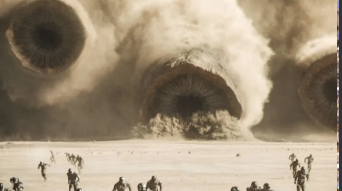
Frank Herbert’s acclaimed science fiction masterpiece, Dune, has garnered praise for its intricate world-building. Herbert crafted elaborate societies, religions, and economic systems, each endowed with rich histories.
Frank Herbert
Arguably the most renowned of Herbert’s creations is the desert planet Arrakis, affectionately dubbed Dune, characterized by its unforgiving climate and colossal sandworms. Serving as the primary setting for much of the novel and its cinematic adaptations, the latest installment of director Denis Villeneuve’s vision, Dune: Part Two, is set to debut in theaters on March 1.
Notably, Frank Herbert not only fashioned a vivid fantasy realm but also constructed a scientifically plausible planet, notes Alexander Farnsworth, a climate modeler at the University of Bristol in England.
Several years ago, Farnsworth and his team developed a computer simulation of Arrakis’ climate, accessible via the Climate Archive website. Drawing from the well-established principles governing weather and climate on Earth, the team utilized our planet as a foundational framework. This approach aligns with Herbert’s inspiration, which drew from a quasi-scientific examination of dune systems on Earth.
Augmenting their model with details gleaned from Herbert’s novels and the Dune Encyclopedia, the team uncovered distinct atmospheric attributes of the fictional planet. Arrakis, they postulated, boasts an atmosphere akin to Earth’s, albeit with notable disparities. Notably, while Arrakis exhibits lower levels of carbon dioxide compared to Earth, it harbors significantly more ozone in its lower atmosphere. This surplus of ozone, a potent greenhouse gas, would render Arrakis’ atmosphere substantially warmer despite the lower CO2 levels.
However, such an abundance of ozone in the lower atmosphere could prove toxic to humans, necessitating technological interventions to mitigate its effects. Conversely, ozone in the upper atmosphere could serve as a shield against harmful radiation from Arrakis’ star, Canopus.
According to Farnsworth, Arrakis would hypothetically orbit Canopus at a distance similar to that between Pluto and the sun. Nevertheless, Canopus, a luminous white star with a surface temperature of approximately 7,200°C, surpasses the sun’s heat significantly. Although uncertainties persist regarding the accuracy of these assumptions, they underscore the planet’s harsh environmental conditions.
While Frank Herbert depiction of Arrakis includes polar ice caps, Farnsworth and his team contend that the extreme temperatures would preclude their existence. Moreover, the inhospitable conditions at higher latitudes and the relentless sandstorms in tropical regions would pose formidable challenges to human habitation, necessitating extensive technological support.
Despite these obstacles, Arrakis remains a potentially livable albeit harsh world for humans. However, the colossal sandworms that inhabit the planet present a different story. Vertebrate paleontologist Patrick Lewis of Sam Houston State University suggests that the environmental conditions on Arrakis would likely render survival implausible for such gigantic organisms.
Lewis points out the physiological challenges faced by organisms of such size, particularly regarding oxygen absorption and heat regulation. Frank Herbert He speculates that Arrakis’ sandworms would require a radically different anatomical structure to sustain their colossal proportions, potentially involving superlight skeletal materials and extraordinary muscle strength. However, such adaptations would introduce additional complications, particularly concerning mobility and heat management, ultimately questioning the feasibility of these creatures thriving in Arrakis’ harsh climate.
In summary, while life on Arrakis may be feasible for humans with sufficient technological support, the existence of giant sandworms remains a speculative aspect of Herbert’s intricate universe. As fans contemplate the realities of life on Frank Herbert Arrakis, they may find solace in the notion that encounters with these mythical creatures are likely confined to the realm of fiction.